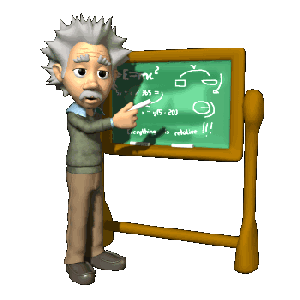
martes, 16 de junio de 2020
RESUMEN CONCEPTOS GRAMATICALES
Hola a todos/as, como os prometí aquí os he puesto un resumen con los principales conceptos gramaticales. ¡Espero que os sea de utilidad!


miércoles, 10 de junio de 2020
ADJECTIVES
Cuando nos encontramos con varios adjetivos delante de un nombre, el orden de colocación es el siguiente:
Ej. A pretty, big, red and white hat.


COMPARATIVES
Con 1 ó 2 sílabas, añadimos "ER" ej. small-smaller
Con 1 sílaba acabado en "e", añadimos "R" ej. nice-nicer
Con 1 sílaba acabado en vocal+consonante, doblamos la consonante y añadimos "ER" ej.big-bigger
Con 2 sílabas si acaba en -y, quitamos "y" añadimos "IER" ej. lucky-luckier
Con 2 ó más sílabas, añadimos "MORE" ej. interesting- more interesting
Algunos adjetivos de 2 sílabas pueden ir de las dos formas,con "er" o con "more son: los que acaban en -ow, -le, -er y polite, quiet, common. ej. Sally is more polite than me= Sally is politer than me.


SUPERLATIVES
Con 1 sílaba, añadimos "EST", ej,weak-weakest
Con 1 sílaba terminado en "e", añadimos "ST" ej. nice-nicest
Con 1 sílaba acabado en vocal+consonante, doblamos la consonante y añadimos "EST ej. big-biggest
Con 2 sílabas acabado en "Y", quitamos "y" añadimos "ier" lucky-luckiest
Con 2 ó más sílabas, añadimos "MOST", interesting- most interesting.
Algunos adjetivos de 2 sílabas pueden ir de las dos formas,con "est" o con "most", son: los que acaban en -ow, -le, -er y polite, quiet, common. Ej Mary is the clevest girl in the class= Mary is the most clever girl in the class.


Cuando nos encontramos con varios adjetivos delante de un nombre, el orden de colocación es el siguiente:
Ej. A pretty, big, red and white hat.


COMPARATIVES
Con 1 ó 2 sílabas, añadimos "ER" ej. small-smaller
Con 1 sílaba acabado en "e", añadimos "R" ej. nice-nicer
Con 1 sílaba acabado en vocal+consonante, doblamos la consonante y añadimos "ER" ej.big-bigger
Con 2 sílabas si acaba en -y, quitamos "y" añadimos "IER" ej. lucky-luckier
Con 2 ó más sílabas, añadimos "MORE" ej. interesting- more interesting
Algunos adjetivos de 2 sílabas pueden ir de las dos formas,con "er" o con "more son: los que acaban en -ow, -le, -er y polite, quiet, common. ej. Sally is more polite than me= Sally is politer than me.


SUPERLATIVES
Con 1 sílaba, añadimos "EST", ej,weak-weakest
Con 1 sílaba terminado en "e", añadimos "ST" ej. nice-nicest
Con 1 sílaba acabado en vocal+consonante, doblamos la consonante y añadimos "EST ej. big-biggest
Con 2 sílabas acabado en "Y", quitamos "y" añadimos "ier" lucky-luckiest
Con 2 ó más sílabas, añadimos "MOST", interesting- most interesting.
Algunos adjetivos de 2 sílabas pueden ir de las dos formas,con "est" o con "most", son: los que acaban en -ow, -le, -er y polite, quiet, common. Ej Mary is the clevest girl in the class= Mary is the most clever girl in the class.


miércoles, 3 de junio de 2020
PRESENT SIMPLE OR PRESENT CONTINUOS
PRESENT SIMPLE:
 3º persona del singular (he, she, it)
3º persona del singular (he, she, it)


Son 5 juegos, en la columna de la izquierda
vas cambiando y jugando a cada uno de ellos:
¿Cuándo usar uno u otro? Este truco os ayudará:
PRESENT SIMPLE / PRESENT
CONTINUOS
| ↓ | ↓ | ||
| ↓ ↓ ↓ | ↓ ↓ ↓ |
EVERY DAY NOW
SUJETO + VERBO
The present simple is u sed:
- for general truths and facts, e.g. The Earth goes around the Sun.
- to describe routines, e.g. I get up at six o´clock every day.
- for situations which are always or generally true at the present time, e.g. She lives in Tokyo.
-en afirmativa se añade "S" al verbo
- en negativa e interrogativa se usa DOES

PRESENT CONTINUOS (NOW)
SUJETO + TO BE + VERBO CON ING
The present continuos is used:
- to describe something that´s happening at the moment, e.g. Jhon´s sitting in the living room and reading a book.
- to describe something that´s true now, but is temporary, e.g. I´m living in London at the moment.
- for events or actions happening in the present but not necessarily at the moment, e.g. I´m learning Spanish at school.

Repasa con estos juegos:
https://wordwall.net/es/resource/1847782/present-continuous-present-simple-kids
- Ordenar por grupo
- Aplasta topos
- Verdadero o falso
- Abre la
caja
- Ahorcado
Suscribirse a:
Comentarios (Atom)





